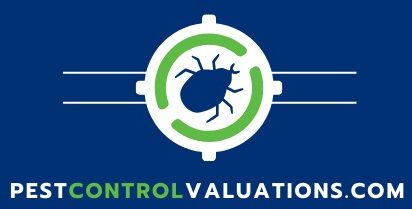Top 10 Factors That Influence the Sale Price of a Pest Control Company (Part 1: Key Business Metrics)

Introduction
When preparing to sell your pest control business, understanding the factors that influence its sale price is essential. While financial metrics often dominate valuation discussions, they are just part of the story. In this first part of a two-part series, we’ll focus on five key business metrics that significantly impact the value of your pest control company.
1. Revenue Trends
Revenue is one of the first metrics buyers evaluate when assessing a business’s financial health.
- Importance of Steady Growth: A pest control business with a consistent or growing revenue stream demonstrates stability and effective management. Fluctuating or declining revenue, on the other hand, raises red flags.
- Seasonal Adjustments: The pest control industry often experiences seasonal highs and lows. Buyers will expect detailed records of seasonal patterns and how your business adapts to maintain profitability.
- Monthly Recurring Revenue (MRR): Highlighting consistent recurring revenue from contracts ensures buyers of predictable income streams.

Pro Tip: Break down revenue by service type (residential vs. commercial) and frequency (one-time vs. recurring). This transparency adds credibility to your valuation.

2. Profit Margins
- Gross Profit Margins: Pest control businesses with higher gross profit margins often command higher sale prices. These margins indicate operational efficiency and effective pricing strategies.
- Net Profit Margins: Buyers will assess how much of your revenue translates into actual profit after deducting operating expenses. Healthy net profit margins reflect strong cost management.
- Benchmarking: Compare your margins to industry averages to demonstrate competitive strength.
Pro Tip: Focus on adjusted EBITDA (Earnings Before Interest, Taxes, Depreciation, and Amortization), which offers a clear picture of your business’s cash flow.
3. Recurring Service Contracts
Long-term contracts are a goldmine for pest control businesses.
- Customer Loyalty: Contracts with residential and commercial clients demonstrate trust and satisfaction, reducing financial risk for buyers.
- Predictable Income: Recurring service agreements ensure a steady cash flow, which is highly attractive to prospective buyers.
Retention Rates: Highlighting high contract renewal rates adds to your business’s value by showcasing customer loyalty.

Pro Tip: Include details about contract terms, renewal rates, and customer demographics to give buyers confidence in your business’s stability.

4. Geographical Location and Market Penetration
- High-Demand Areas: Businesses operating in regions with a high demand for pest control services, such as urban or suburban areas, often fetch higher sale prices.
- Market Share: Being a market leader in your service area, especially in a less saturated market, increases your value.
- Opportunities for Expansion: Highlight any potential for geographic expansion to neighboring areas.
Pro Tip: Map out your service areas and provide data on market trends to emphasize opportunities for growth.
5. Industry-Specific Technology Adoption
- CRM Systems: Implementing customer relationship management (CRM) software streamlines operations, improves customer satisfaction, and enhances retention.
- Scheduling and Routing Tools: Software that optimizes technician routes can lower fuel costs and improve efficiency, which buyers find appealing.
- Automated Billing: A streamlined billing process reduces errors and ensures faster payments.

Pro Tip: Buyers are more likely to pay a premium for businesses that demonstrate a commitment to efficiency and customer service through technology.
Conclusion
The first five factors—revenue trends, profit margins, recurring contracts, market penetration, and technology adoption—are the foundation of your pest control business’s valuation. By focusing on these metrics, you can enhance your business’s appeal to potential buyers.
In the next post, we’ll explore additional factors, including customer retention and market dynamics, to help you position your business for a successful sale.
